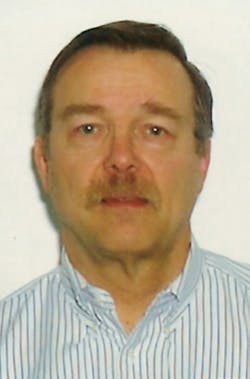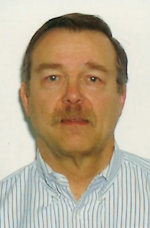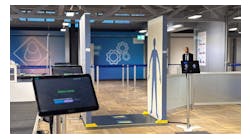Each month as I consider topics for this column on aviation security-related issues, I return to a profusion of media articles collected in recent months – what’s new, what’s coming up, what’s TSA done this time ... Ordinarily, I try not to re-visit silly governmental ideas in this space, but one from just a few days ago reminded me that some dumb ideas just won’t die. To wit: “TSA tests new security technology: "digital dog nose ... the size of cell phone... mounted on a drone to detect explosives as well or better than a bomb-sniffing dog.” I feel dumb just typing that, as I am related to a police dog trainer and am familiar with their capabilities. I can’t help wondering how it deals with the fact that the drone’s four-fan engines tend to blend all the surrounding scents and then blow them all away from the sensor. But I digress.
The digital dog nose reminded me of my 2009 column regarding a DHS/MIT effort to build a “bionic nose”. We are led to believe human scent-prints change according to mood and are as unique as fingerprints. MIT researchers are trying next to isolate the tangy smell of stress-related adrenaline so that nervous passengers or those with a guilty conscience can be singled out, which I suggest is half the people in the airport. One university academic said chemists can already identify human smells by race, age and environment. One problem (among many) is that most best-selling perfumes and deodorants have complex molecules that mask natural smells on purpose, and confuse detector dogs. Natural scents are also boosted by stress, which releases hormones from armpits and hands. Who knew armpits were sweaty.The odor can then spread in 20-foot clouds to cling to clothes, and about 45 passengers surrounding you in the waiting area.
Perhaps my favorite item for consideration: NASA has announced it is developing a brain-monitoring hat for airline pilots to wear. Let me repeat that: a brain monitoring hat. Using infrared spectroscopy and other supporting technology, it will “know” when pilots become mentally overloaded by measuring blood flow in the brain and oxygen in the blood. NASA says this is “non-invasive” (yes, that would describe a hat) and “safe”, which assumes a mental overload alarm doesn’t distract the pilot from trying to figure which critical task can be halted to make his hat stop ringing. NASA says “no matter how much training pilots have, conditions could occur when too much is going on in the cockpit” – yeah, like another damn alarm.
And finally, dear reader: TSA has partially funded Israeli technology companies developing sensors that read such bodily functions as heart rate and respiration for signs of emotional stress - 'brain-fingerprinting' technology which checks for behavioral intent. Let me repeat that one for emphasis: behavioral intent. It consists of flashing subliminal messages across a video screen, then measuring passengers' biometric response to the stimulus.
It is backed in part by grants from the Transportation Security Administration, which hopes to implement similar systems (see “non-invasive”, above). Among the technologies under development are one presumably strong enough to pick up biometric information from a footstep when combined with video imaging, and a seat cushion full of hidden biometric sensors that could provide a detailed read on someone sitting in an airport waiting area.
Once these technologies are in place, it is envisioned that passengers who use an automated check-in system could be looking at departure information screens without realizing they've just been exposed to various terrorist-related visual stimuli, bringing about a biometric response that can be picked up by strategically placed sensors.
Like, in your hat, or in your … you know...



